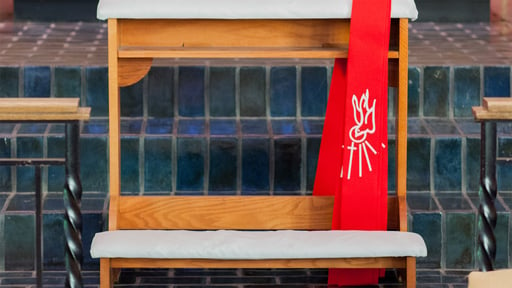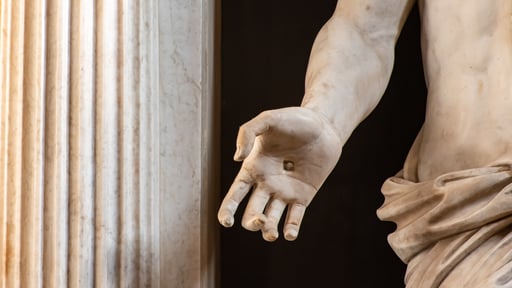“We’re on chapter 25 of your book right now! We’ll be finishing it next week.”
This was my greeting as I walked on the sidewalk past our Lutheran school just the other day. I don’t know this student well, but we both know the Messengers, and we shared an instant bond.
Friends, I can’t tell you how thrilling it is for me to know that students are reading The Messengers series! High schools, middle schools, confirmation classes, and the list goes on. It’s my joy to know that even if I’m not in a classroom, Simon is. And I’m here to help all of you make that experience the best it can be.
So it’s time again for me to give ideas on ways to teach Concealed. I’ve touched on how you can do this in a literature classroom and book club setting, and I’m moving on to ways you can use Concealed in a religion classroom. One teacher told me she’s using Discovered in her seventh-grade literature class and Concealed in her eighth-grade religion class. How cool! Well, I hope this helps.
Getting started . . . at the end. If you’ve been following me on social media or reading the previous blog posts, you already know that there are questions at the end of the novel (two questions per chapter). In the classroom, these can serve well as comprehension assessments or discussion starters. If you tackle several chapters each class, feel free to let your students pick which questions to discuss. Of course, you can plan ahead and pick your favorites. Need some ideas? Here’s a list of questions I would probably ask if I were in your religion classroom:
- Chapter 1, Question 1 outlines a tricky balance. There were times when Jesus did not want others to talk about who He is. There are other times where the urgency of the Gospel is essential to saving lives eternally. Why was timing important for the sake of Jesus’ ministry? Has that changed today? Is it important to think about how and when to share the Gospel with others? You can go back to the plot itself and evaluate the times Simon did or did not share the Gospel for a starting point. This discussion point could take up an entire day’s lesson.
- Chapter 7, Question 1 offers a poignant Bible passage. Take time to discuss the context of Paul’s letter, and compare it to the setting of Concealed. In other words, how were things difficult for the Early Church? How are they difficult for the Messengers? Ask students what kinds of hardships they face today.
- Chapter 10, Question 1 brings the persecution of New Morgan to light. It may surprise students that Christian persecution is more prevalent today than ever before. The motivation part of this question can be difficult. You could start with Paul, digging into the Book of Acts. You could also highlight that in this world, there are forces beyond what we can see.
- Chapter 14, Question 2 is an invitation for students to pray. It’s also an invitation to think of the needs of others. As a Christian community, we are brothers and sisters in Christ who build one another up throughout our life together. This can become a rich opportunity to bring awareness and empathy into your classroom, as well as an opportunity for prayer. It might even grow into a daily routine where students offer prayer requests and the class prays together.
- Chapter 15, Question 1 reminds students of how Simon has helped his friends. True, he has had the unique opportunity to protect someone’s life. How can we all protect the lives of others? (Luther’s Small Catechism on the Fifth Commandment can help with this.) But there’s also eternal life, which is more lasting. How do we play a role in the eternal life of others? Simon is struggling with protecting the earthly lives of his friends while also sharing the Good News of eternal life with others. His situation can provide a rich and meaningful debate.
I usually stop my list of questions here, but I’m going to keep going. . . .
- Chapter 17, Question 1 hearkens back to Chapter 15, Question 1, and Simon’s struggle in this novel. What is there to lose? What is there to gain? When is risking life worth gaining eternal life for another?
- Chapter 21, Question 2 highlights one of the most important lines of the novel. Ask students how Jonathan’s advice can affect the way they talk with “enemies.” What is the true goal of interacting with unbelievers? with those who attack?
- Chapter 25, Question 2 might take some time. While Zeke’s entire sermon is not recorded in the novel, read through it with the class. Were there parts that were surprising? How can Zeke’s words help the students today? You may also want to open this discussion to address funerals in general and the importance of sermons. Who is the sermon for?
- Chapter 26, Question 1 could be taken on the surface or brought much deeper. On the surface, you can talk about times where our sinful selves tune out God’s Word. Much deeper, you can talk about how spiritual battles, pain, and even depression can all attack a believer. We’re starting to see that Simon has a tendency to block out painful memories, which can partially explain his forgetfulness during Life Preparation Year and how he eventually tuned out the Message altogether. Now, he’s facing a similar struggle. Be careful: mental illness is not the same as spiritual doubt. Don’t let students link the two as one. However, both can be serious attacks against a believer and must be treated with love, patience, and diligence.
- Chapter 29, Question 2 is important. On the surface, discuss how Simon applies Jonathan’s plea to forgive others. Going deeper, have students reflect on how others have sinned against them. Silently or in small groups, they can share how they have (or have not yet) been able to forgive.
The Message Worth Dying For. By now, students have read quite a few Bible passages as Simon and the Messengers find, recall, and discuss them. At the beginning of this book, pass out the free downloadable. Ask students to keep the handout in their book and write down Bible passages as they go. If they think of other favorite Bible passages along the way, encourage students to add them. Then, every week, ask students to write a prayer in the handout as well. They can write a prayer based on the Bible passages, about things going on in their lives, or with a combination of the two. Like Simon, who prayed for others, they can pray for their fellow Messengers too.
The Christian Life. In the first book, Simon experiences life as a new believer in many ways. In this second book, Simon is realizing that the Christian life is not an easy one. There are struggles and challenges that come with living in but not of the world. For a project, assign students to read about the life of another Christian. They could read a biography, read about someone in the Bible, or interview someone they know. As a part of a brief presentation, students can talk about the faith of the individual as well as ways God helped him or her through challenges in his or her life.












